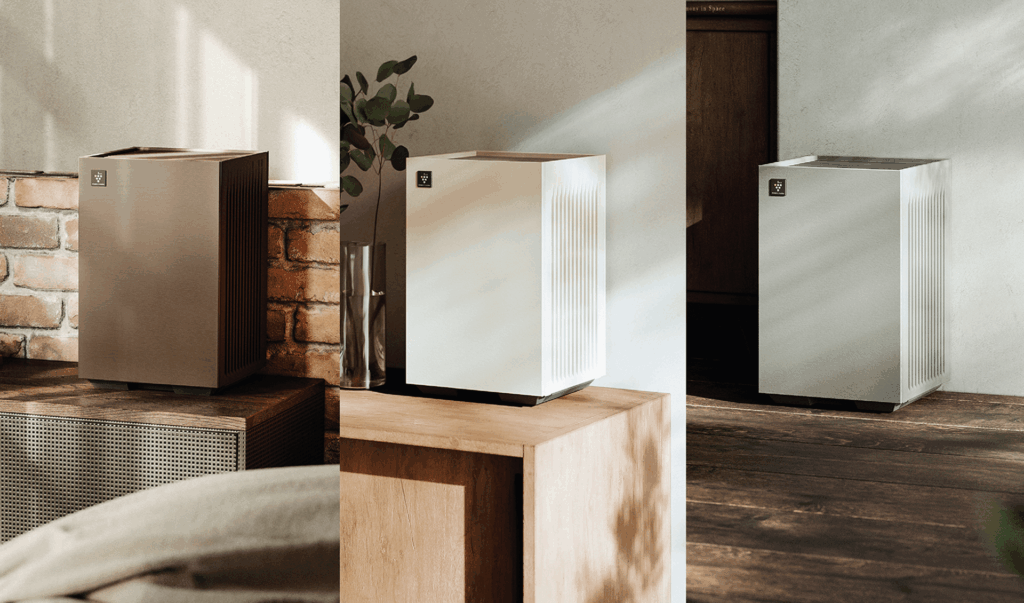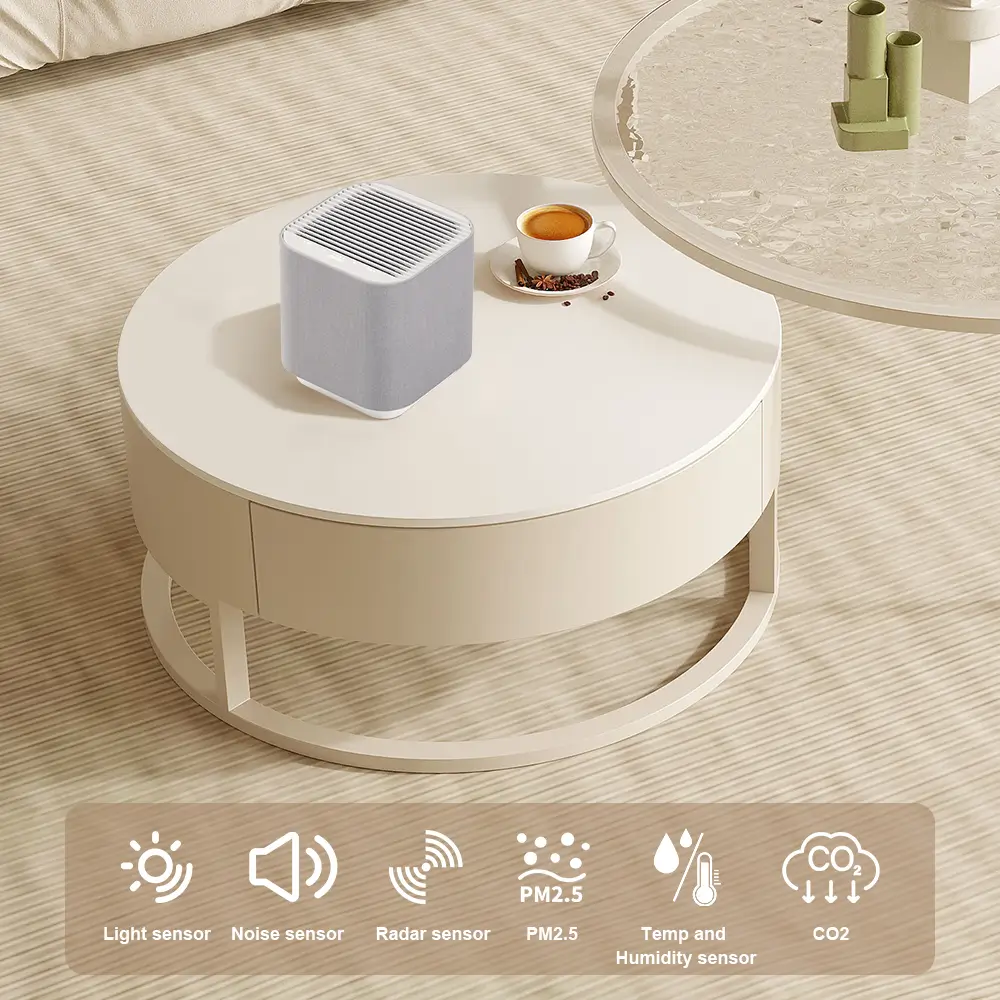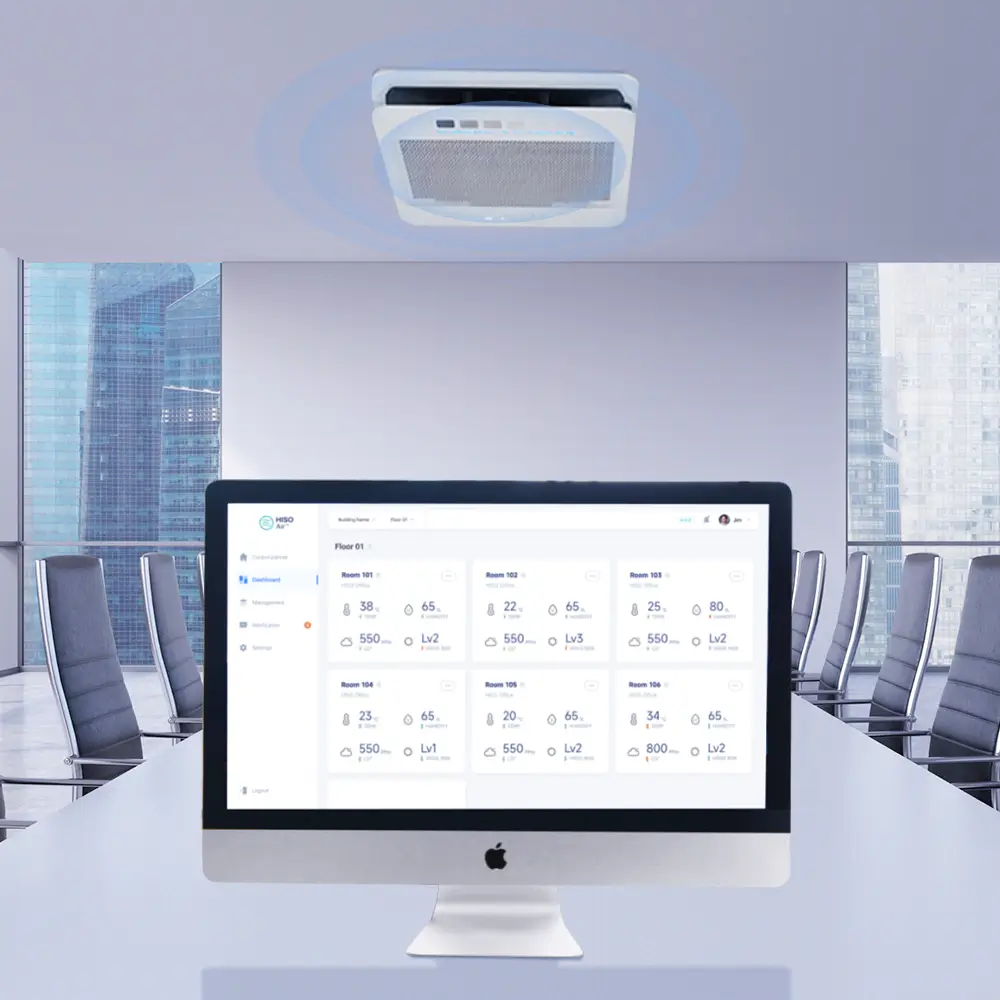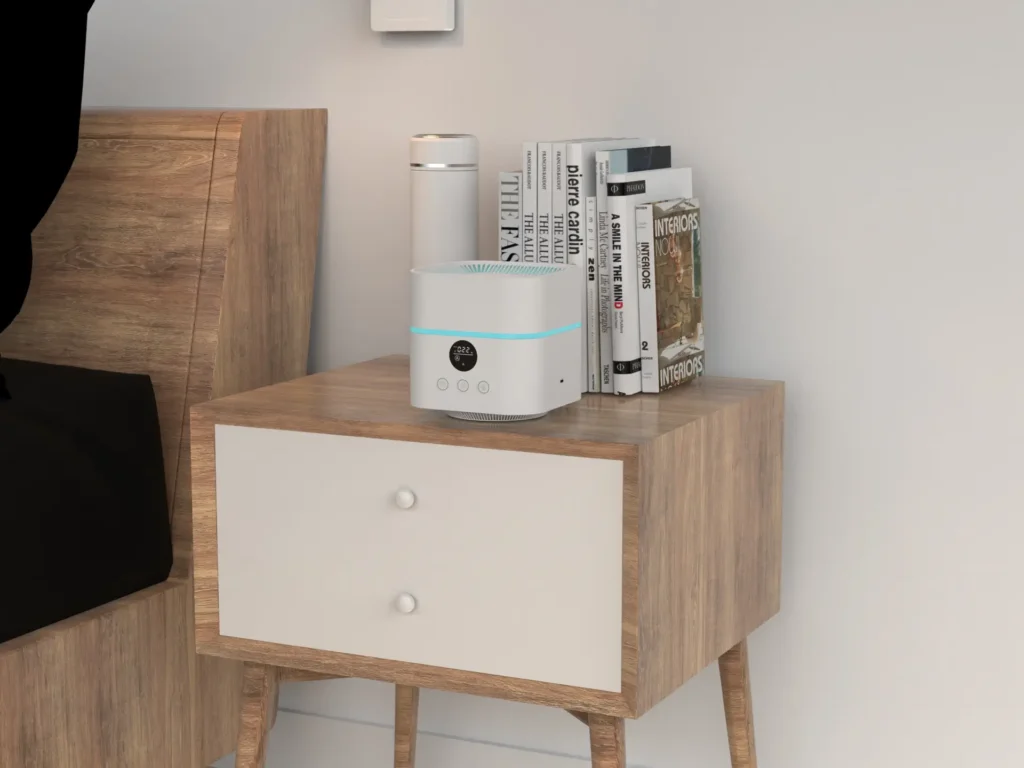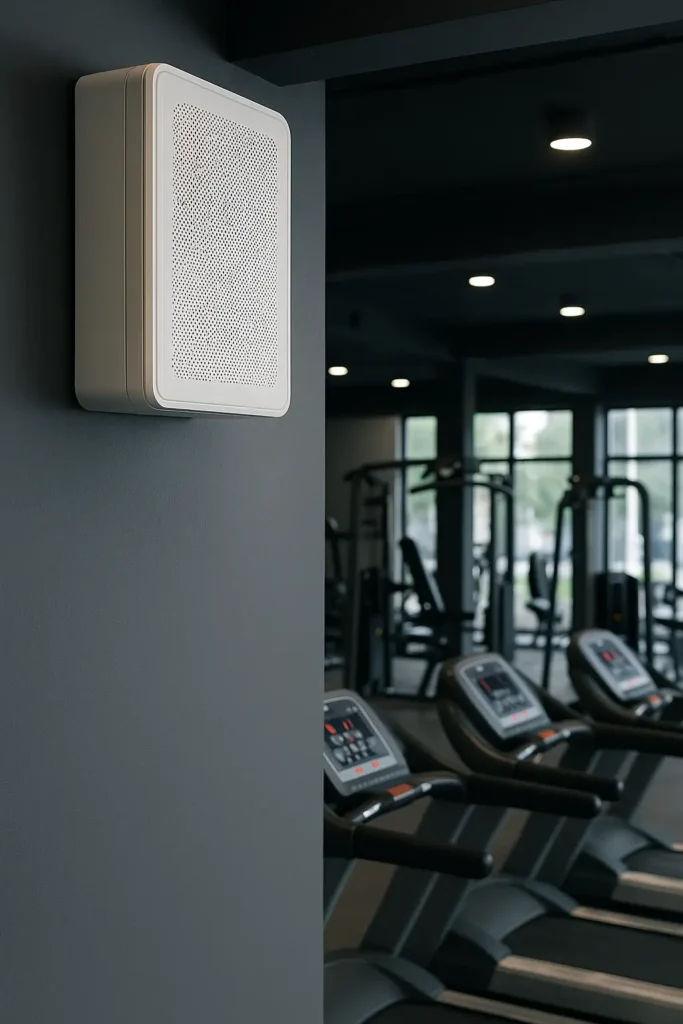
Haben Sie schon einmal über die Luft nachgedacht, die Sie zu Hause einatmen? Angesichts des wachsenden Bewusstseins für Luftqualität und Gesundheit greifen immer mehr Amerikaner zu Luftreinigern, um sicherzustellen, dass ihre Wohnräume sicher und sauber sind.
Es wird erwartet, dass der US-Markt für Luftreiniger bis 2032 auf $6,7 Milliarden anwachsen wird, mit einer durchschnittlichen jährlichen Wachstumsrate (CAGR) von 6,6% von 2022 bis 2032.
Der US-Markt für Heimluftreiniger ist mit einem Wert von mehreren Milliarden Dollar weltweit der größte und wird aufgrund von Gesundheitsbedenken und Innovationen in Nischensegmenten voraussichtlich erheblich wachsen.
Aber Zahlen sagen nur einen Teil der Geschichte. Schauen wir uns genauer an, was diesen dynamischen Markt wirklich antreibt und welche Trends seine Zukunft bestimmen könnten.
Die USA sind der weltweit größte Markt für Haushaltsluftreiniger.Wahr
Der US-amerikanische Markt ist weltweit führend in Bezug auf Größe und Wachstumspotenzial, was auf gesundheitliche Bedenken zurückzuführen ist.
Was treibt das Wachstum des US-Luftreinigermarktes an?
Der Markt für Luftreiniger in den USA wächst aufgrund von Umweltproblemen und gesundheitsbewussten Verbrauchern rasant.
Das Wachstum des US-Luftreinigermarktes wird durch die zunehmende Umweltverschmutzung, technologische Fortschritte und Nischenmarktinnovationen sowie durch ein erhöhtes Bewusstsein für Gesundheits- und Umweltfragen angetrieben.

Umwelt- und Gesundheitsaspekte
In den letzten Jahren haben Faktoren wie Waldbrände1 und die zunehmende Umweltverschmutzung haben den Bedarf an sauberer Innenraumluft noch verstärkt, so dass Luftreiniger unverzichtbar sind. Die COVID-19-Pandemie hat dieses Bewusstsein geschärft, so dass viele Menschen versuchen, ihre Wohnumgebung zu verbessern, um ihre Gesundheit zu schützen. Es wird erwartet, dass sich dieser Trend fortsetzen wird, da die Öffentlichkeit immer gesundheitsbewusster wird.
Historische technologische Fortschritte
Die USA können auf eine lange Geschichte in der Luftreinigungstechnologie zurückblicken, mit HEPA Filter, die ursprünglich vom Militär entwickelt wurden. Diese Geschichte bildet eine solide Grundlage für kontinuierliche Innovationen und das Vertrauen der Verbraucher. Auf dem Markt werden regelmäßig neue Spitzentechnologien zur Bewältigung spezifischer Umweltprobleme eingeführt.
Staatliche Politik und Unterstützung
Eine entscheidende Rolle spielt auch eine unterstützende Regierungspolitik, die auf die Verbesserung der Luftqualität abzielt. Vorschriften und Subventionen ermutigen sowohl Hersteller als auch Verbraucher, Luftreiniger einzuführen. So umfassen staatliche Anreize für energieeffiziente Geräte oft auch moderne Luftreiniger.
Innovationen für Nischenmärkte
Nischenmärkte wie haustierspezifische, babyfreundliche und Auto-Luftreiniger expandieren rasch. Diese spezialisierten Produkte erfüllen einzigartige Verbraucherbedürfnisse und treiben das allgemeine Marktwachstum voran. Unternehmer, die in diesen Bereichen erfolgreich sind, führen dies häufig auf die Erschließung unterversorgter Segmente zurück, die ein erhebliches Wachstumspotenzial bieten.
Strategische Partnerschaften
Partnerschaften mit etablierten Herstellern wie Hisoair können wichtige Ressourcen für die Markteinführung innovativer Produkte bereitstellen. Solche Kooperationen ermöglichen es Unternehmern, vorhandenes Fachwissen und Infrastrukturen zu nutzen, die Markteinführungszeit erheblich zu verkürzen und die Produktqualität zu verbessern.
Das Wachstum des US-Luftreinigermarktes wird durch Waldbrände angetrieben.Wahr
Waldbrände erhöhen die Umweltverschmutzung und steigern die Nachfrage nach Luftreinigern.
Die Politik der Regierung behindert das Wachstum des Luftreinigermarktes in den USA.Falsch
Unterstützende Maßnahmen und Subventionen fördern das Marktwachstum.
Wie können Nischenmärkte die Chancen im Luftreinigungssektor verbessern?
Nischenmärkte in der Luftreinigerbranche erschließen ein ungenutztes Potenzial und treiben Innovation und Spezialisierung voran.
Nischenmärkte verbessern die Chancen, indem sie spezifische Verbraucherbedürfnisse befriedigen, die Innovation fördern und den Unternehmen die Möglichkeit geben, ihre Produkte wirksam zu differenzieren.

Verständnis der Nischenmärkte in der Luftreinigerbranche
In der weitläufigen Welt der Luftreiniger, Nischenmärkte2 haben sich als starke Wachstumsmöglichkeiten erwiesen. Diese Märkte konzentrieren sich auf spezielle Segmente wie Luftreiniger für Haustiere, die sich an Haustierbesitzer richten, die sich über Hautschuppen und Allergene Sorgen machen. Ebenso richten sich Babyluftreiniger an Eltern, die ihre Kleinkinder vor schädlichen Schadstoffen schützen wollen.
Schlüsselfaktoren für das Wachstum des Nischenmarktes
Mehrere Faktoren tragen zum Entstehen von Nischenmärkten im Bereich der Luftreiniger bei:
- Gesundheitliche Belange: Angesichts des zunehmenden Bewusstseins für die Luftqualität sind die Verbraucher eher geneigt, Produkte zu kaufen, die bestimmte Gesundheitsprobleme lösen.
- Technologische Fortschritte: Innovationen wie HEPA Filter und eine intelligente Technologieintegration ermöglichen es den Herstellern, maßgeschneiderte Lösungen für unterschiedliche Bedürfnisse zu entwickeln.
- Regulatorische Unterstützung: Staatliche Maßnahmen zur Förderung sauberer Luft steigern die Nachfrage nach Spezialprodukten.
Die Rolle von Innovation und Anpassung
Nischenmärkte leben von Individualisierung und Innovation. So sind beispielsweise Luftreiniger für das Auto bei Pendlern, die auch unterwegs für saubere Luft sorgen wollen, sehr beliebt. Diese Geräte sind oft mit Funktionen wie Ionisatoren und tragbarem Design ausgestattet und zeigen, wie der technologische Fortschritt den spezifischen Bedürfnissen des Lebensstils gerecht wird.
| Nischenmarkt | Zielgruppe Verbraucher | Einzigartige Merkmale |
|---|---|---|
| Luftreiniger für Haustiere | Besitzer von Haustieren | Filtert Tierhaare und Allergene |
| Baby-Luftreiniger | Eltern | Leiser Betrieb, sichere Materialien |
| Auto-Luftreiniger | Pendler | Kompaktes, tragbares Design |
Strategische Partnerschaften als Katalysator für den Erfolg
Für Unternehmer, die in diese Nischensegmente einsteigen, können strategische Partnerschaften mit Herstellern wie Hisoair entscheidend sein. Kooperationen können die Entwicklung innovativer Produkte erleichtern, die der Marktnachfrage entsprechen und einen Wettbewerbsvorteil in dieser sich schnell entwickelnden Branche sichern. Darüber hinaus bieten Partnerschaften Zugang zu Spitzentechnologie und Erkenntnissen, die es Unternehmen ermöglichen, effizient zu skalieren.
Das Verständnis dieser Dynamik ist für jeden, der die wachsenden Möglichkeiten im Luftreinigungssektor nutzen will, von entscheidender Bedeutung. Ganz gleich, ob es darum geht, spezifische Verbraucheranliegen anzusprechen oder strategische Allianzen zu nutzen, Nischenmärkte bieten einen Weg zu nachhaltigem Wachstum und Rentabilität.
Nischenmärkte für Luftreiniger zielen auf spezifische Verbraucherbedürfnisse ab.Wahr
Nischenmärkte konzentrieren sich auf spezielle Segmente wie Luftreiniger für Haustiere und Babys.
Alle Luftreiniger sind für den allgemeinen Gebrauch im Haushalt konzipiert.Falsch
Einige Luftreiniger sind auf spezielle Bedürfnisse wie Autos oder Haustiere zugeschnitten.
Welche Rolle spielt die Technologie bei der Entwicklung von Luftreinigern?
Die Technologie revolutioniert die Luftreiniger und macht sie effizienter und benutzerfreundlicher.
Der technologische Fortschritt hat die Luftreiniger verändert, indem er die Filtrationseffizienz verbessert, intelligente Funktionen integriert und die Anwendungsbereiche erweitert hat, z. B. durch tragbare und Auto-Modelle.
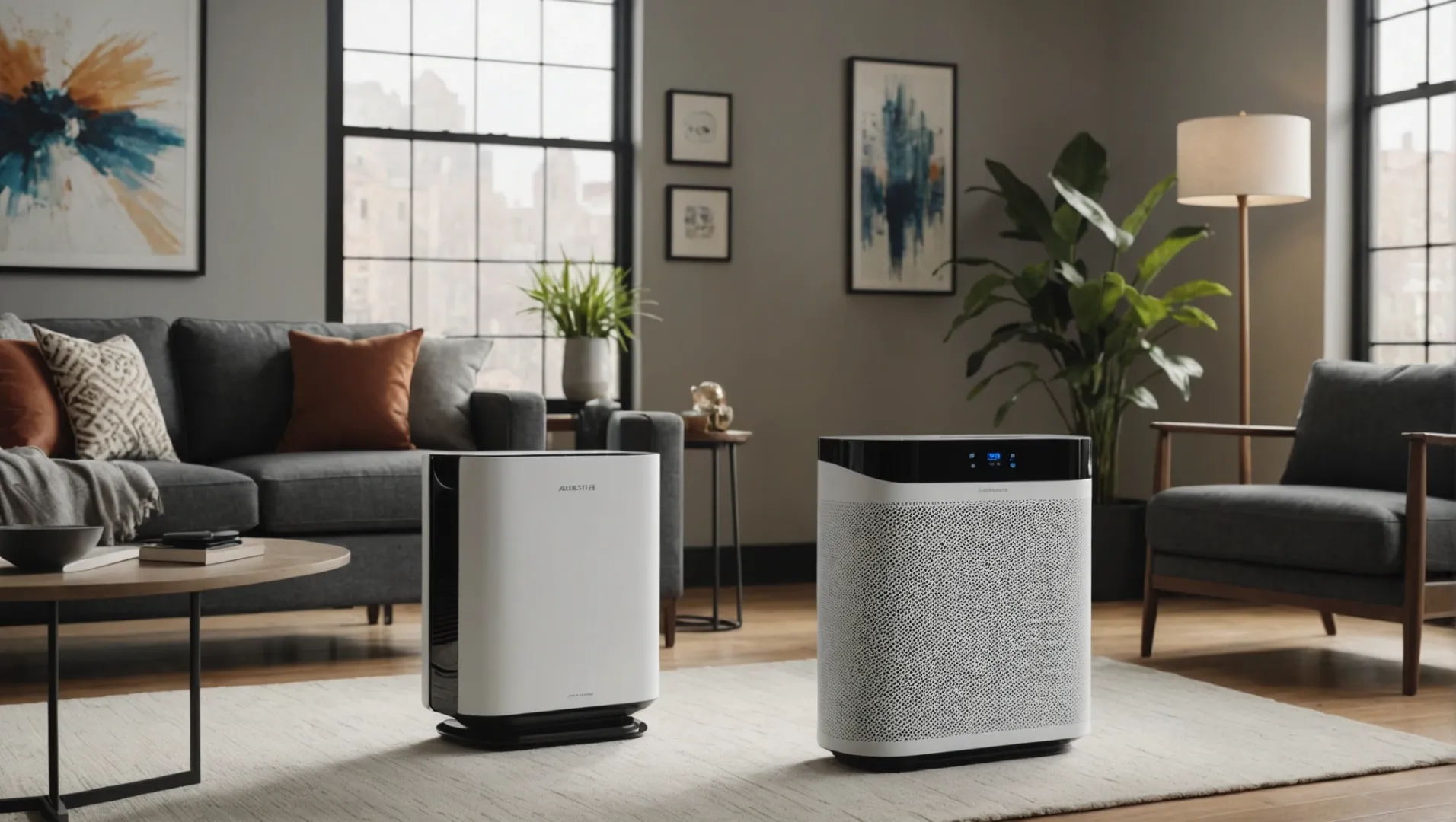
Von HEPA Filter zur fortschrittlichen mehrstufigen Filtration
Luftreiniger gewannen zunächst an Bedeutung mit der Einführung von HEPA (High-Efficiency Particulate Air)-Filter, eine vom US-Militär entwickelte Technologie. HEPA Filter sind nach wie vor ein Eckpfeiler, da sie Partikel bis zu einer Größe von 0,3 Mikrometern effektiv abfangen. Die technologische Entwicklung hat jedoch mehrstufige Filtersysteme eingeführt, die Folgendes kombinieren HEPA mit Aktivkohle, UV-C-Licht und Ionisierung, um ein breiteres Spektrum an Schadstoffen, einschließlich Viren, VOCs (flüchtige organische Verbindungen) und Gerüchen, zu bekämpfen.
Intelligente Funktionen und Konnektivität
Die Integration von IoT (Internet der Dinge) hat zur Entwicklung von intelligenten Luftreinigern geführt, die mit Heimnetzwerken verbunden werden können. Diese Geräte können über Smartphone-Apps ferngesteuert werden, so dass die Nutzer die Luftqualität in Echtzeit überwachen und die Einstellungen von überall aus anpassen können. Darüber hinaus können die intelligenten Sensoren die Reinigungsstufen automatisch an die festgestellten Schadstoffwerte anpassen, um den Energieverbrauch zu optimieren und eine optimale Luftqualität zu gewährleisten.
Tragbare und spezielle Reinigungsgeräte
Der technologische Fortschritt hat die Entwicklung von tragbaren und spezialisierten Luftreinigern ermöglicht. Es gibt jetzt kompakte Modelle für den Einsatz im Auto und auf Reisen, die sich um die Luftqualität unterwegs kümmern. Darüber hinaus gibt es Nischenprodukte wie Luftreiniger, die speziell für Haustiere oder Babys geeignet sind, was zeigt, wie die Technologie die Marktdifferenzierung vorantreibt.
Zukunftsperspektiven: AI und maschinelles Lernen
Blick in die Zukunft, AI (Künstliche Intelligenz) und maschinelles Lernen werden die Luftreinigungstechnologie weiter verändern. Diese Systeme könnten Verschmutzungstrends vorhersagen, personalisierte Reinigungslösungen anbieten und die Geräteeffizienz verbessern. Wenn diese Technologien ausgereift sind, versprechen sie, Luftreiniger noch unverzichtbarer in unserem täglichen Leben zu machen.
Die Rolle der Technologie in der Luftreinigerbranche ist unbestreitbar. Die immer wieder auftauchenden Innovationen verbessern nicht nur die Funktionalität der Produkte, sondern schaffen auch neue Marktchancen für Unternehmer, die aus diesem wachsenden Sektor Kapital schlagen wollen. Für diejenigen, die sich für diese Fortschritte interessieren, lohnt sich ein Blick auf AI Anwendungen in der Luftreinigung3 oder Verständnis Vorteile der mehrstufigen Filtration4 könnte tiefere Einblicke bieten.
HEPA-Filter fangen Partikel bis zu einer Größe von 0,3 Mikrometern ab.Wahr
HEPA-Filter sind so konzipiert, dass sie Partikel bis zu einer Größe von 0,3 Mikrometern auffangen.
KI kann keine Verschmutzungstrends bei Luftreinigern vorhersagen.Falsch
KI wird entwickelt, um Verschmutzungstrends vorherzusagen und Reinigungsanlagen zu optimieren.
Warum ist eine strategische Partnerschaft der Schlüssel zum Erfolg in dieser Branche?
In einer wettbewerbsintensiven Branche wie der der Luftreiniger sind strategische Partnerschaften für Innovation und Marktreichweite von entscheidender Bedeutung.
Strategische Partnerschaften in der Luftreinigungsbranche ermöglichen es Unternehmen, komplementäre Stärken zu nutzen, neue Märkte zu erschließen und Innovationen zu fördern, was entscheidend ist, um sich in einem überfüllten Markt zu behaupten.

Komplementäre Stärken ausnutzen
In der Luftreinigungsbranche geht es bei Kooperationen oft darum, Fachwissen und Ressourcen zu bündeln, die in einem einzelnen Unternehmen sonst nicht zur Verfügung stehen. Zum Beispiel kann ein technisches Startup mit innovativen HEPA Filterdesigns könnten mit einem etablierten Hersteller wie Hisoair5 um eine qualitativ hochwertige Produktion zu gewährleisten. Solche Allianzen ermöglichen es den Unternehmen, die Stärken des jeweils anderen zu nutzen und so ihr Produktangebot zu verbessern und ihre Wettbewerbsfähigkeit zu steigern.
Ausdehnung der Marktreichweite
Strategische Partnerschaften können auch den Eintritt in neue geografische Märkte erleichtern. So können sich beispielsweise in den USA ansässige Luftreinigungsunternehmen mit internationalen Vertriebshändlern zusammenschließen, um die wachsende Nachfrage in Übersee zu bedienen, insbesondere in Regionen, die von Umweltverschmutzung und schlechter Luftqualität geplagt sind. Durch die Zusammenarbeit mit lokalen Unternehmen erhalten die Unternehmen wertvolle Einblicke in die Präferenzen der Verbraucher und das regulatorische Umfeld, die für eine erfolgreiche Expansion entscheidend sind.
Innovation und Nischenentwicklung vorantreiben
Innovation ist der Schlüssel zum Luftreinigungsmarkt, auf dem sich Nischensegmente wie Luftreiniger für Haustiere und tragbare Modelle rasch entwickeln. Durch Partnerschaften mit Technologieunternehmen oder akademischen Einrichtungen können Unternehmen neue Produktmerkmale entwickeln und bestehende Technologien verbessern. Partnerschaften, die sich auf Forschung und Entwicklung (F&E) konzentrieren, können innovative Lösungen hervorbringen, die spezifische Verbraucherbedürfnisse erfüllen und ein Unternehmen von seinen Wettbewerbern abheben.
Regulatorische Herausforderungen bewältigen
Die Luftreinigerbranche unterliegt strengen Vorschriften, um die Sicherheit der Verbraucher und die Wirksamkeit der Produkte zu gewährleisten. Der Aufbau von Allianzen mit Rechtsexperten oder Organisationen, die mit dem regulatorischen Umfeld vertraut sind, kann Unternehmen dabei helfen, komplexe Compliance-Anforderungen effizient zu bewältigen. Dies mindert nicht nur das Risiko, sondern beschleunigt auch die Markteinführung neuer Produkte.
Fallstudie: Das Kooperationsmodell von Hisoair
Nehmen wir das Beispiel von Hisoair, das erfolgreich strategische Partnerschaften eingegangen ist, um seine Produktpalette und Marktpräsenz zu verbessern. Durch die Zusammenarbeit mit verschiedenen Interessengruppen - von Zulieferern bis hin zu Einzelhändlern - ist es Hisoair gelungen, ein diversifiziertes Portfolio zu schaffen, das verschiedene Verbraucherbedürfnisse abdeckt. Ein solches Modell unterstreicht die Bedeutung strategischer Allianzen für nachhaltiges Wachstum und Innovation in der Branche.
Strategische Partnerschaften erhöhen die Marktreichweite für Luftreiniger.Wahr
Partnerschaften helfen Unternehmen, neue geografische Märkte zu erschließen und zu expandieren.
Hisoair vermeidet strategische Partnerschaften, um die Kontrolle zu behalten.Falsch
Hisoair geht Partnerschaften ein, um seine Produktpalette und Marktpräsenz zu erweitern.
Schlussfolgerung
Der US-amerikanische Markt für Luftreiniger ist für ein anhaltendes Wachstum bereit, das durch gesundheitliche Bedenken und Innovationen angetrieben wird. Der Schlüssel zum Erfolg ist die Konzentration auf Nischen und strategische Partnerschaften.
-
Erfahren Sie, wie Waldbrände die Luftqualität im ganzen Land verschlechtern..: Waldbrände setzen große Mengen an Kohlendioxid, schwarzem und braunem Kohlenstoff sowie Ozonvorläufer in die Atmosphäre frei. Diese Emissionen beeinflussen Strahlung, Wolken ... ↩
-
Erfahren Sie mehr über spezialisierte Segmente, die Innovationen bei Luftreinigern vorantreiben: Die Industrie vertikalen Segment in der globalen industriellen Luftreiniger Marktbericht umfasst Lebensmittel & Getränke, Metallverarbeitung, Pharma, Landwirtschaft, Energie ... ↩
-
Entdecken Sie, wie KI die Leistung von Luftreinigern optimiert..: Der Luftreiniger enthält vier eingebaute fortschrittliche Sensoren zur Erkennung von Staub, VOCs, Temperatur und Luftfeuchtigkeit. Außerdem kann sich das KI-System mit dem Internet verbinden ... ↩
-
Erfahren Sie mehr über verbesserte Filtrationseffizienz und Schadstoffentfernung..: Da der Schwerpunkt auf der Reduzierung von Krankheitserregern in der Luft liegt, ist eine Verbesserung der Luftqualität in Innenräumen nur durch die Kombination der besten Luftreinigungstechnologien möglich. ↩
-
Erfahren Sie, wie eine Partnerschaft mit Hisoair die Produktionskapazitäten verbessert..: Wir engagieren uns für die Verbesserung des Wohlbefindens durch hervorragende Luftqualität und stellen sicher, dass jeder Kunde von unserem engagierten Support und unserer technischen Exzellenz profitiert. ↩


